US Airways 2008 Annual Report Download - page 23
Download and view the complete annual report
Please find page 23 of the 2008 US Airways annual report below. You can navigate through the pages in the report by either clicking on the pages listed below, or by using the keyword search tool below to find specific information within the annual report.-
 1
1 -
 2
2 -
 3
3 -
 4
4 -
 5
5 -
 6
6 -
 7
7 -
 8
8 -
 9
9 -
 10
10 -
 11
11 -
 12
12 -
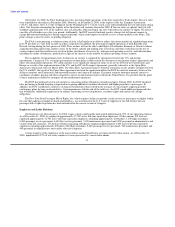 13
13 -
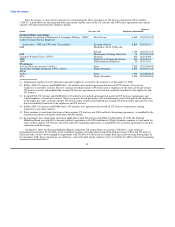 14
14 -
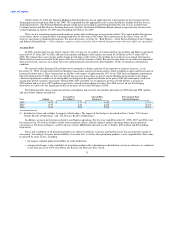 15
15 -
 16
16 -
 17
17 -
 18
18 -
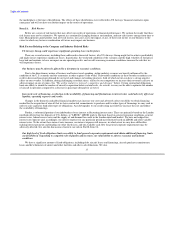 19
19 -
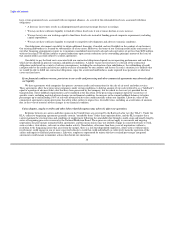 20
20 -
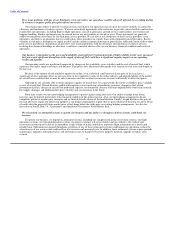 21
21 -
 22
22 -
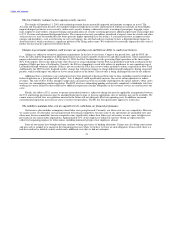 23
23 -
 24
24 -
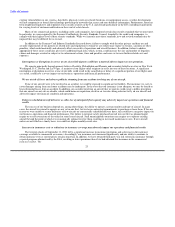 25
25 -
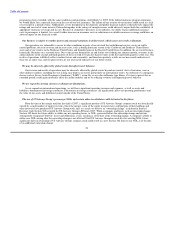 26
26 -
 27
27 -
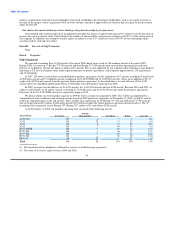 28
28 -
 29
29 -
 30
30 -
 31
31 -
 32
32 -
 33
33 -
 34
34 -
 35
35 -
 36
36 -
 37
37 -
 38
38 -
 39
39 -
 40
40 -
 41
41 -
 42
42 -
 43
43 -
 44
44 -
 45
45 -
 46
46 -
 47
47 -
 48
48 -
 49
49 -
 50
50 -
 51
51 -
 52
52 -
 53
53 -
 54
54 -
 55
55 -
 56
56 -
 57
57 -
 58
58 -
 59
59 -
 60
60 -
 61
61 -
 62
62 -
 63
63 -
 64
64 -
 65
65 -
 66
66 -
 67
67 -
 68
68 -
 69
69 -
 70
70 -
 71
71 -
 72
72 -
 73
73 -
 74
74 -
 75
75 -
 76
76 -
 77
77 -
 78
78 -
 79
79 -
 80
80 -
 81
81 -
 82
82 -
 83
83 -
 84
84 -
 85
85 -
 86
86 -
 87
87 -
 88
88 -
 89
89 -
 90
90 -
 91
91 -
 92
92 -
 93
93 -
 94
94 -
 95
95 -
 96
96 -
 97
97 -
 98
98 -
 99
99 -
 100
100 -
 101
101 -
 102
102 -
 103
103 -
 104
104 -
 105
105 -
 106
106 -
 107
107 -
 108
108 -
 109
109 -
 110
110 -
 111
111 -
 112
112 -
 113
113 -
 114
114 -
 115
115 -
 116
116 -
 117
117 -
 118
118 -
 119
119 -
 120
120 -
 121
121 -
 122
122 -
 123
123 -
 124
124 -
 125
125 -
 126
126 -
 127
127 -
 128
128 -
 129
129 -
 130
130 -
 131
131 -
 132
132 -
 133
133 -
 134
134 -
 135
135 -
 136
136 -
 137
137 -
 138
138 -
 139
139 -
 140
140 -
 141
141 -
 142
142 -
 143
143 -
 144
144 -
 145
145 -
 146
146 -
 147
147 -
 148
148 -
 149
149 -
 150
150 -
 151
151 -
 152
152 -
 153
153 -
 154
154 -
 155
155 -
 156
156 -
 157
157 -
 158
158 -
 159
159 -
 160
160 -
 161
161 -
 162
162 -
 163
163 -
 164
164 -
 165
165 -
 166
166 -
 167
167 -
 168
168 -
 169
169 -
 170
170 -
 171
171 -
 172
172 -
 173
173 -
 174
174 -
 175
175 -
 176
176 -
 177
177 -
 178
178 -
 179
179 -
 180
180 -
 181
181 -
 182
182 -
 183
183 -
 184
184 -
 185
185 -
 186
186 -
 187
187 -
 188
188 -
 189
189 -
 190
190 -
 191
191 -
 192
192 -
 193
193 -
 194
194 -
 195
195 -
 196
196 -
 197
197 -
 198
198 -
 199
199 -
 200
200 -
 201
201 -
 202
202 -
 203
203 -
 204
204 -
 205
205 -
 206
206 -
 207
207 -
 208
208 -
 209
209 -
 210
210 -
 211
211 -
 212
212 -
 213
213 -
 214
214 -
 215
215 -
 216
216 -
 217
217 -
 218
218 -
 219
219 -
 220
220 -
 221
221 -
 222
222 -
 223
223 -
 224
224 -
 225
225 -
 226
226 -
 227
227 -
 228
228 -
 229
229 -
 230
230 -
 231
231 -
 232
232 -
 233
233 -
 234
234 -
 235
235 -
 236
236 -
 237
237 -
 238
238 -
 239
239 -
 240
240 -
 241
241 -
 242
242 -
 243
243 -
 244
244 -
 245
245 -
 246
246 -
 247
247 -
 248
248 -
 249
249 -
 250
250 -
 251
251 -
 252
252 -
 253
253 -
 254
254 -
 255
255 -
 256
256 -
 257
257 -
 258
258 -
 259
259 -
 260
260 -
 261
261 -
 262
262 -
 263
263 -
 264
264 -
 265
265 -
 266
266 -
 267
267 -
 268
268 -
 269
269 -
 270
270 -
 271
271 -
 272
272 -
 273
273 -
 274
274 -
 275
275 -
 276
276 -
 277
277 -
 278
278 -
 279
279 -
 280
280 -
 281
281 -
 282
282 -
 283
283 -
 284
284 -
 285
285 -
 286
286 -
 287
287 -
 288
288 -
 289
289 -
 290
290 -
 291
291 -
 292
292 -
 293
293 -
 294
294 -
 295
295 -
 296
296 -
 297
297 -
 298
298 -
 299
299 -
 300
300 -
 301
301 -
 302
302 -
 303
303 -
 304
304 -
 305
305 -
 306
306 -
 307
307 -
 308
308 -
 309
309 -
 310
310 -
 311
311 -
 312
312 -
 313
313 -
 314
314 -
 315
315 -
 316
316 -
 317
317 -
 318
318 -
 319
319 -
 320
320 -
 321
321 -
 322
322 -
 323
323 -
 324
324 -
 325
325 -
 326
326 -
 327
327 -
 328
328 -
 329
329 -
 330
330 -
 331
331 -
 332
332 -
 333
333 -
 334
334 -
 335
335 -
 336
336 -
 337
337 -
 338
338 -
 339
339 -
 340
340 -
 341
341 -
 342
342 -
 343
343 -
 344
344 -
 345
345 -
 346
346 -
 347
347 -
 348
348 -
 349
349 -
 350
350 -
 351
351 -
 352
352 -
 353
353 -
 354
354 -
 355
355 -
 356
356 -
 357
357 -
 358
358 -
 359
359 -
 360
360 -
 361
361 -
 362
362 -
 363
363 -
 364
364 -
 365
365 -
 366
366 -
 367
367 -
 368
368 -
 369
369 -
 370
370 -
 371
371 -
 372
372 -
 373
373 -
 374
374 -
 375
375 -
 376
376 -
 377
377 -
 378
378 -
 379
379 -
 380
380 -
 381
381 -
 382
382 -
 383
383 -
 384
384 -
 385
385 -
 386
386 -
 387
387 -
 388
388 -
 389
389 -
 390
390 -
 391
391 -
 392
392 -
 393
393 -
 394
394 -
 395
395 -
 396
396 -
 397
397 -
 398
398 -
 399
399 -
 400
400 -
 401
401
 |
 |

Table of Contents
The travel industry continues to face ongoing security concerns.
The attacks of September 11, 2001 and continuing terrorist threats materially impacted and continue to impact air travel. The
Aviation and Transportation Security Act mandates improved flight deck security; deployment of federal air marshals on board flights;
improved airport perimeter access security; airline crew security training; enhanced security screening of passengers, baggage, cargo,
mail, employees and vendors; enhanced training and qualifications of security screening personnel; additional provision of passenger data
to U.S. Customs and enhanced background checks. These increased security procedures introduced at airports since the attacks and other
such measures as may be introduced in the future generate higher operating costs for airlines. A concurrent increase in airport security
charges and procedures, such as restrictions on carry-on baggage, has also had and may continue to have a disproportionate impact on
short-haul travel, which constitutes a significant portion of our flying and revenue. We would also be materially impacted in the event of
further terrorist attacks or perceived terrorist threats.
Changes in government regulation could increase our operating costs and limit our ability to conduct our business.
Airlines are subject to extensive regulatory requirements. In the last several years, Congress has passed laws, and the DOT, the
FAA, the TSA and the Department of Homeland Security have issued a number of directives and other regulations. These requirements
impose substantial costs on airlines. On October 10, 2008, the FAA finalized new rules governing flight operations at the three major
New York airports. These rules did not take effect because of a legal challenge, but the FAA has pushed forward with a reduction in the
number of flights per hour at LaGuardia. Currently, the FAA is attempting to work with airlines to implement its new operations cap at
LaGuardia through voluntary methods. If this is not successful, the FAA may resort to other methods to reduce congestion in New York.
Additionally, the DOT recently finalized a policy change that will permit airports to charge differentiated landing fees during congested
periods, which could impact our ability to serve certain markets in the future. The new rule is being challenged in court by the industry.
Additional laws, regulations, taxes and policies have been proposed or discussed from time to time, including recently introduced
federal legislation on a "passenger bill of rights," that, if adopted, could significantly increase the cost of airline operations or reduce
revenues. The state of New York's attempt to adopt such a measure has been successfully challenged by the airline industry. Other states,
however, are contemplating similar legislation. The DOT also has a rulemaking pending and recently completed a stakeholder task force
working on various initiatives that could lead to additional expansion of airline obligations in the customer service area and increase our
costs.
Finally, the ability of U.S. carriers to operate international routes is subject to change because the applicable arrangements between
the U.S. and foreign governments may be amended from time to time, or because appropriate slots or facilities may not be available. We
cannot assure you that laws or regulations enacted in the future will not adversely affect our operating costs. In addition, increased
environmental regulation may increase costs or restrict our operations. The EU has been particularly aggressive in this area.
The inability to maintain labor costs at competitive levels could harm our financial performance.
Our business plan includes assumptions about labor costs going forward. Currently, our labor costs are very competitive. However,
we cannot assure you that labor costs going forward will remain competitive, because some of our agreements are amendable now and
others may become amendable, because competitors may significantly reduce their labor costs or because we may agree to higher-cost
provisions in our current labor negotiations. Approximately 87% of the employees within US Airways Group are represented for
collective bargaining purposes by labor unions, including unionized groups of our employees abroad.
Some of our unions have brought and may continue to bring grievances to binding arbitration. Unions may also bring court actions
and may seek to compel us to engage in the bargaining processes where we believe we have no such obligation. If successful, there is a
risk these judicial or arbitral avenues could create additional costs that we did not anticipate.
21
